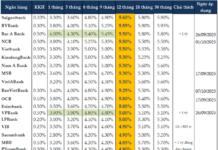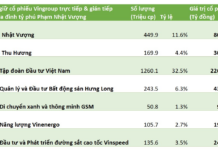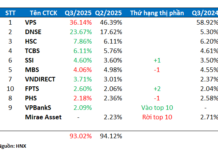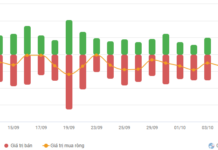To achieve this, it means considering the branch experience, collaborating with fintech companies, leveraging data and analytics to provide personalized solutions, and partnering with consumers to enhance financial health.

When customers become the core of the business, data is collected, analyzed, and deployed regularly to gain a 360-degree view of the customer. This data helps banks and credit organizations in the following ways:
Understanding customer buying behavior, preferences, and level of interaction throughout the entire customer journey. Identifying opportunities for new products, services, and promotions. Building segmentation strategies to increase loyalty and lifetime value. Empowering employees to personalize experiences better.
As financial organizations focus on customer-centricity, the importance of improving experiences and shifting from transactional commitments to relationship commitments increases. According to Capgemini, there are four ways in which financial organizations can directly impact the customer experience to be future-ready:
(1) Transform traditional physical offices into “experience centers.”
(2) Collaborate with fintech and other third-party providers to fill gaps in the business model.
(3) Enhance consumer support throughout their financial health journey.
(4) Establish ownership of overall customer engagement.
Transforming Traditional Branches
Previously, banks and credit organizations utilized branches to build market share. As digital banking adoption increases, especially during the pandemic, financial organizations have to rethink the delivery of banking services. The need to reimagine the function of branches is growing, and so is the impact of financial technology providers in providing superior digital experiences for everyday transactions and cost reduction needs.
A Nasdaq report indicates that building a full-service physical branch can cost over $1.5 million in the United States, with operating costs of nearly $1 million per branch annually. With rising labor costs and higher operating expenses compared to digital alternatives, very few branches are profitable. Despite these concerning figures, most consumers still value relevant branches.
The Capgemini World Retail Banking 2022 report states that 75% of customers believe branches are an important channel, but they want more than just transaction capabilities. Specifically, 64% want self-service options, 44% seek an expanded workplace, and 31% express interest in a richer experience (enhanced reality/virtual reality). The challenge lies in integrating the branch with other channels for a seamless omnichannel experience.
Fostering Fintech Collaboration
To meet the growing demands of digitally-savvy customer bases, banks and credit organizations are increasingly pursuing collaborations with fintech companies and third-party providers. These partnership arrangements (and acquisitions) help bridge gaps in business models, leverage each other’s strengths, and address respective weaknesses, creating mutual benefits.
A report by S&P Global Market Intelligence highlights there were seven bank acquisitions by fintech companies in 2022. In 2021, there were eight bank acquisitions as well. According to Capgemini, with digitally-savvy yet lower-than-desired profitability customer bases, fintech companies can help traditional banking organizations build new value propositions, develop cross-selling opportunities, and offer positive customer-centric experiences.
Besides acquisitions, fintech collaborations can also bring about innovation opportunities that offer both speed and scale of implementation. Recently, many traditional financial institutions have sought third-party collaborations to build improved digital account opening processes, enhanced rewards programs, and better mobile banking experiences. Other collaborative efforts have been undertaken to increase operational efficiency, reduce costs, and access new technologies provided by fintech companies.

To meet the growing demands of digitally-savvy customer bases, banks and credit organizations are increasingly pursuing collaborations with fintech companies and third-party providers.
Supporting Customers’ Financial Health Journey
As the economy becomes more unpredictable and cost of living pressures rise, an increasing number of consumers are seeking ways to improve their overall financial well-being. Leveraging the expertise, access, credibility, data, and technology within the banking industry, banks and credit associations are well-positioned to support consumers’ quests for financial well-being and sound financial decision-making. The savings potential can be significant.
The JD Power Retail Banking Satisfaction Study 2022 reveals that only 44% of US banks have supported customers during financially challenging times. In contrast, around 63% of US customers would switch banks if not supported, while 78% said they would remain if provided support.
Banks and credit associations benefit from having access to vast amounts of data and analytics that can be employed to understand consumer behaviors and financial needs, as well as develop targeted wellness programs and resources. Financial organizations also have robust infrastructure and technology capabilities that can be leveraged to develop and deliver robust financial wellness resources and tools, such as mobile banking applications, online financial management tools, financial planning calculators, and high-targeted financial wellness content. Retail banks are also exploring fintech partnerships to enhance their financial wellness services.
Ultimately, ensuring financial well-being is an excellent way for banks and credit organizations to transition from transactions to commitments, build trust and loyalty. Financial organizations offering strong financial wellness programs and resources can also differentiate themselves from competing players and gain a competitive advantage in a market where consumers are increasingly seeking answers to financial challenges.
Establishing ‘Ownership’ of Customer Engagement
A good customer experience, although important, is just transactional interactions between customers and financial organizations. On the other hand, customer engagement involves continuous two-way communication and a commitment to meeting customers’ growing needs and expectations. The level of interaction and commitment can lead to more sustainable, stronger relationships between customers and brands. Achieving this relationship requires a central authoritative body.
The Chief Marketing Officer (CMO) (or another key central authoritative body) plays a crucial role in leveraging data, artificial intelligence, and analytics tools to create higher levels of interaction and better customer experiences. Data and analytics allow for personalized product and solution development with multi-channel display capabilities, creating regular interactions with customers and user-level data at scale.
The “owner” of customer relationships can be the CMO or another individual within the bank or credit organization. According to the Capgemini World Retail Banking 2022 report, 34% of appointed leaders mentioned that they directly manage analytics operations, and 26% oversee digital partnership relationships. Additionally, about 74% stated they are directly responsible for innovative marketing strategies and planning, while 22% directly managed end-to-end customer experiences or had access to complete customer profiles.
According to Capgemini, “Customers have many alternatives for financial services, but the expected market shift in 2023 gives banks an opportunity to strengthen their game by leveraging their scale, assets, broad customer bases, and legal expertise.” To improve differentiation in the market and become a reliable financial partner, banks and credit organizations will need to understand better the needs, motivations, challenges, and behaviors of customers throughout the entire customer journey.
Reference: The Financial Brand
Compiled by DTSVN author team – Digital Transformation Solutions for the Financial and Banking Industry.





































